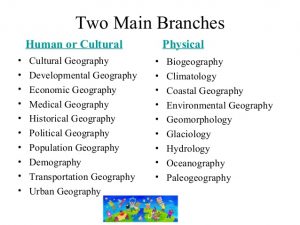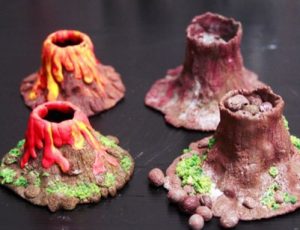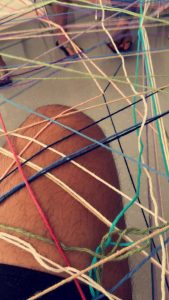Geo-literacy is a concept that should ideally be at the basis of all areas of study in Geography. It is evident that Geography is a multi-faceted subject that is explored in a shocking amount of ways. “Geography is interdisciplinary—it incorporates bits and pieces from the fields of science, arts, health, humanities, law, business, engineering, and technology. The “geographic perspective” (a way to understand a topic or area using spatial relationships) focuses these bits and pieces into a dynamic kaleidoscope of ideas and data. Geography is something you do, not just something you know” (National Geographic Education. Brewer, Winn, 2012). When Geography is accessed in a meaningful and effective way, it is there that students will see how it is evident in so many other facets of life as well as other classes they may be taking. This interdisciplinary aspect is realized through the growth of geo-literacy skills.

SlideShare. Schmidt, Lisa (2014)
Having students that are geo-literate means that they are able to identify connections between topics and access ways of thinking that are critical and well rounded. Geo-literate people are capable of changing the future with their ways of thinking and acting. The chart above illustrates to us ways Geography can be explored and imbedded in those areas are a countless number of essential life skills that benefit many people. Take transportation planning for instance, in that venture it would lead an individual into a position of possibly reducing or eliminating pedestrian and cyclist related deaths in school zone areas through collaboration and changes made with multiple stakeholders. One more instance can be seen with those who study Geographic Information Systems (GIS); in this field alone there are hundreds of ways the skills are utilized whether that be mapping of food deserts, crime hotspots, or even sea level rising.

Party Site. Briggs, Laura (2016)
*Artifact #1 – Play-Doh
Having students work with a tactile material is very helpful when it comes to physical geographic features and processes, the more interactive and integrative an activity or lesson is, the greater impression it might leave on the students. This could be useful when exploring topics such as aeolian sand dunes, mountain formation, or volcano classification, and plate tectonics as well. It is a way to have students learn and understand the new curriculum’s content objectives without reading and memorizing text material. This embraces experiential/play based learning to create understanding and connection to the big ideas of the subject curriculum. I have selected play-doh because of my experiences of tactile learning and memorizing as being some of the strongest. This is evident through my experience in multiple subjects including, Biology, Art, Music, and English. Furthermore, students are able to explore and gather experience with the aforementioned processes on a micro-tactile scale and analyze their ways of thinking and coming to understandings.
Direct Core Competency Linkages:
• Use Social Studies inquiry processes and skills to ask questions; gather, interpret, and analyze ideas; and communicate findings and decisions
*Artifact #2 – Web Negotiation with Yarn, VIDEO CLIP DOWNLOAD
Access the link above for a short video of this Artifact in action ^

Lee, A. (2017)
This yarn activity that we performed in class was very interactive and well designed. For visual and metaphorical thinkers this was also a great opportunity for understanding of what Geography is and how geo-literacy is an essential skill in so many regards. This experience ascribes to the new curriculum because of how it engages students socially through role-play with outlined roles in small groups that will function as a unit representing a category. This shows how all of those field mentioned in figure one connect and come together at the end of the day. This interconnectedness is where the value of Geographic and geo-literacy skills exists. I selected this artifact because of it’s power to engage visual and tactile learners through inquiry interactions to explore the causes and consequences of issues pertaining to each unit. In addition, it engages the students in meaningful, focused ways with research processes as well.
Direct Core Competency Linkages:
• Use Social Studies inquiry processes and skills to ask questions; gather, interpret, and analyze ideas; and communicate findings and decisions
• Assess how prevailing conditions and the actions of individuals or groups influence events, decisions, or developments (cause and consequence)
